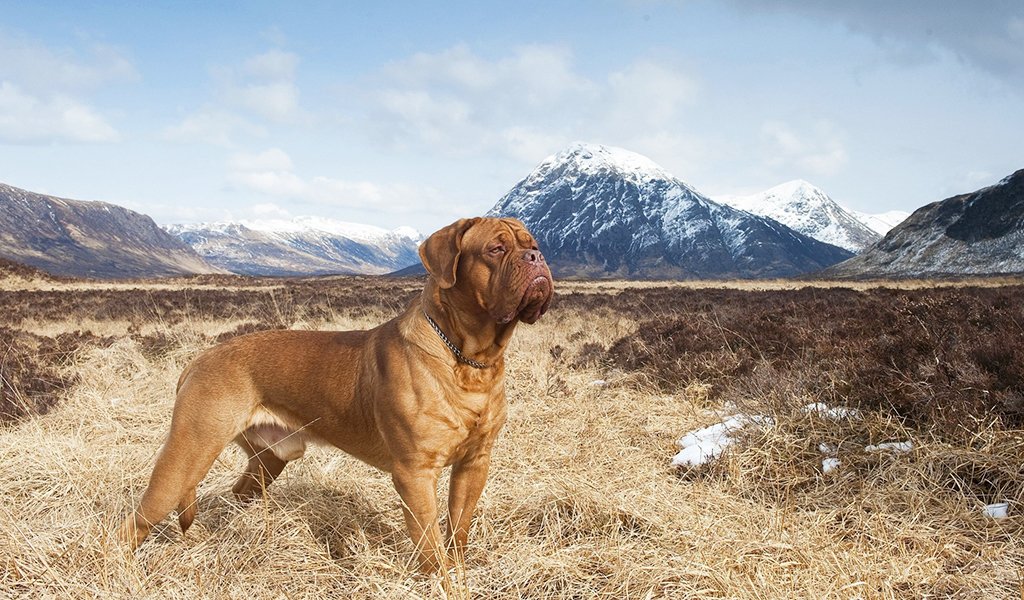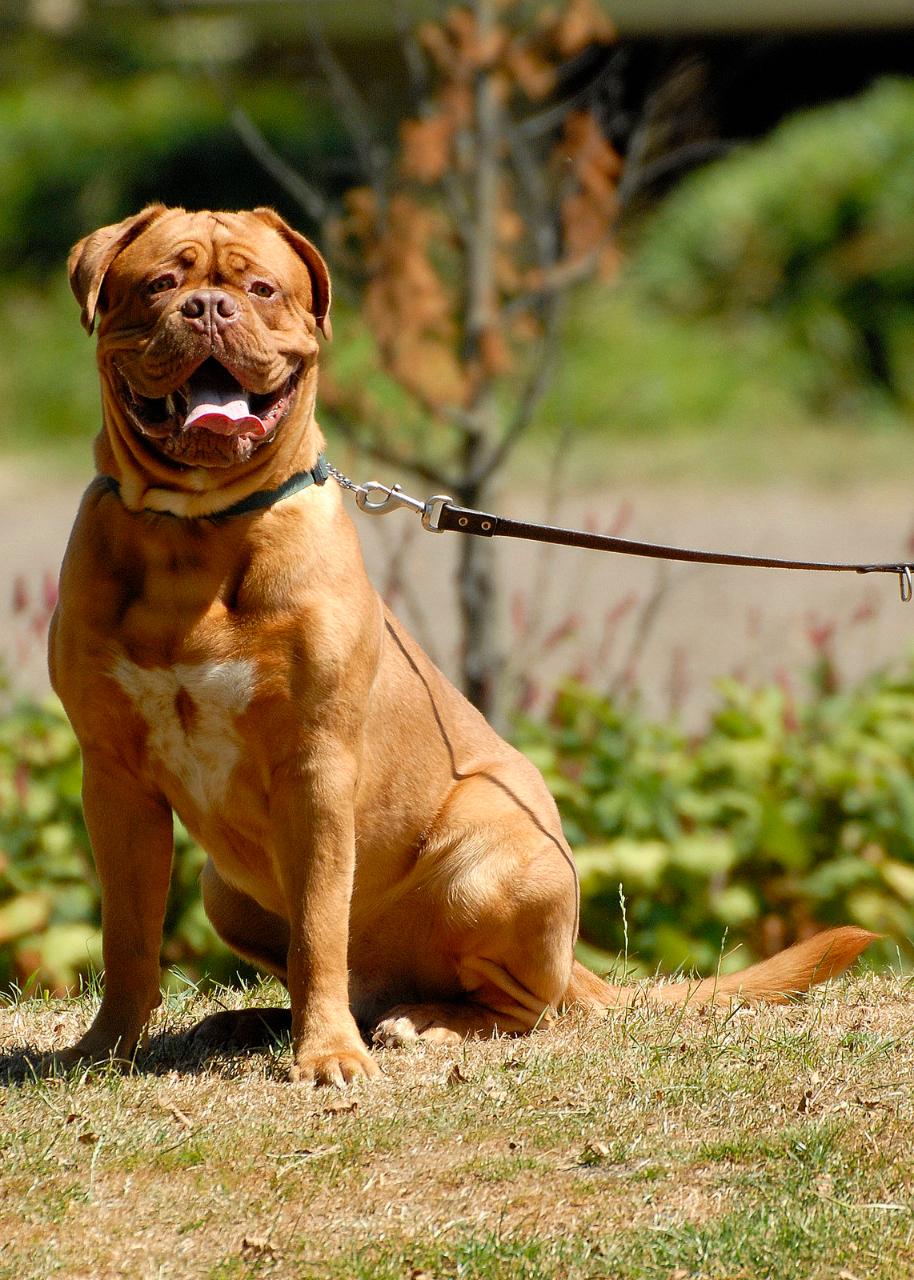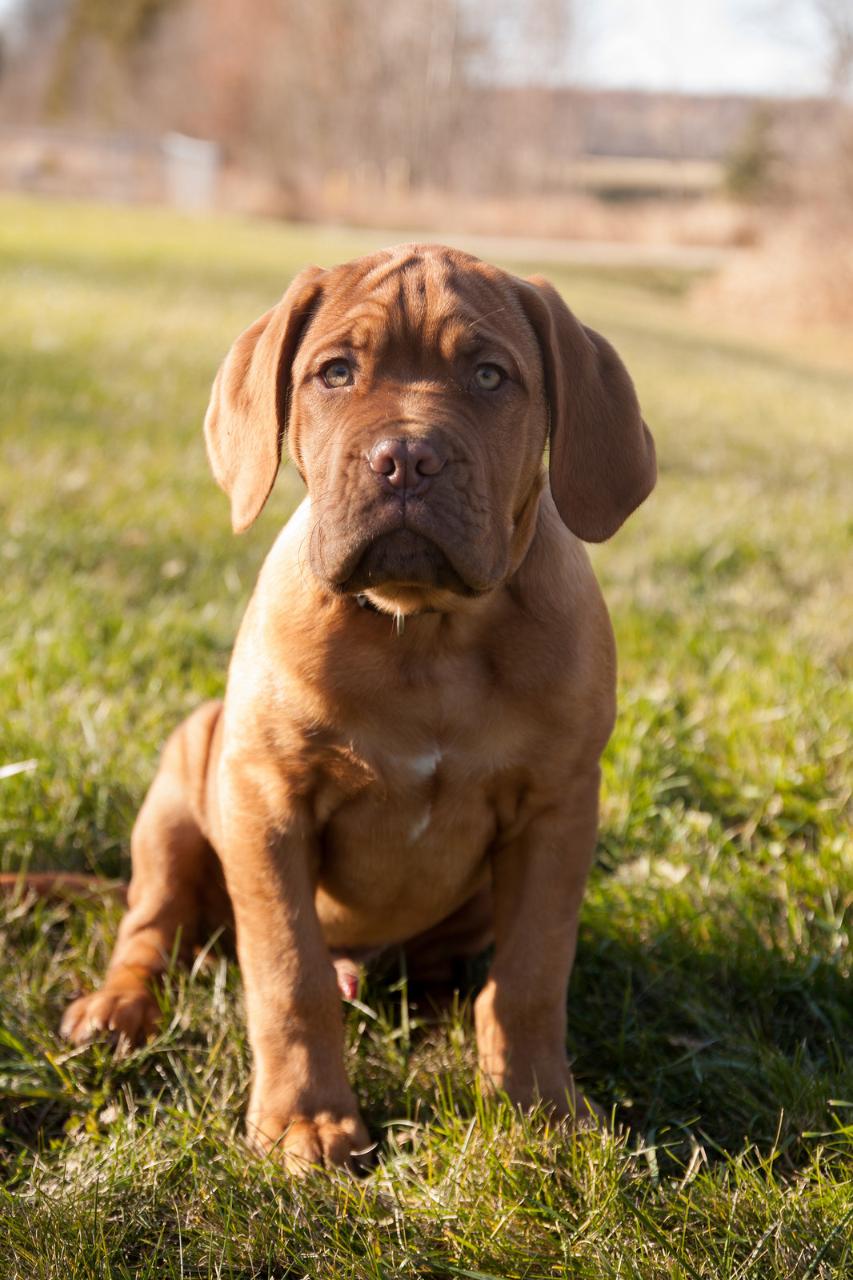The Dogue de Bordeaux seems like an unsociable giant, but deep down he is not averse to showing affection and soaking up the arms of its owner. Strong affection for family members often takes a serious turn: if a huge dog decided that now is the right time for “kissing”, then it will not work to leave dry after meeting with a loving pet. However, such strong sociability should hardly be considered a disadvantage, because this is a kind of “key” with which the dog will open the door to the heart of the future owner! So feel free to make acquaintance with the Dogue de Bordeaux if you dream of a devoted friend who will give you love and attention. A personable companion instills confidence and a sense of security.
#1 The origin of the Dogue de Bordeaux is considered a bone of contention among dog handlers all over the world: it is not known for certain who became the progenitor of the breed, and the controversy is still ongoing.

Three theories are common among dog breeders. According to the first version, Great Danes descended from the fighting "French", participants in the bloody dog pits. Adherents of the second theory believe that the breed originated from the bulldogs. The third version says that the genotype of the dogs is directly related to the Tibetan Mastiffs.
#2 The first theory became the most widespread: “Bordeaux” inherited their appearance from the ancient Alans, widespread among the Spaniards and the French.

These fighting dogs were described in detail by Gaston de Foix, who was fond of hunting and in the XIV century published a whole book, where the Alan appears to be one of the oldest hunting breeds in France. The grip of a powerful dog was proportional to the grip of three greyhounds at the same time, so the Alans were bred to hunt wild boars and other large prey. At the same time, the animals were also suitable for guarding cattle, transporting refreshed carcasses, and even for participating in widespread bloodthirsty entertainment - dog pits.
#3 All Great Danes of France were divided into three types.

The differences between them were dramatic. There were dogs with a uniform color or points over the entire surface of the body, a small or large head, a straight or scissor bite ... They contributed to the appearance of the modern breed.

